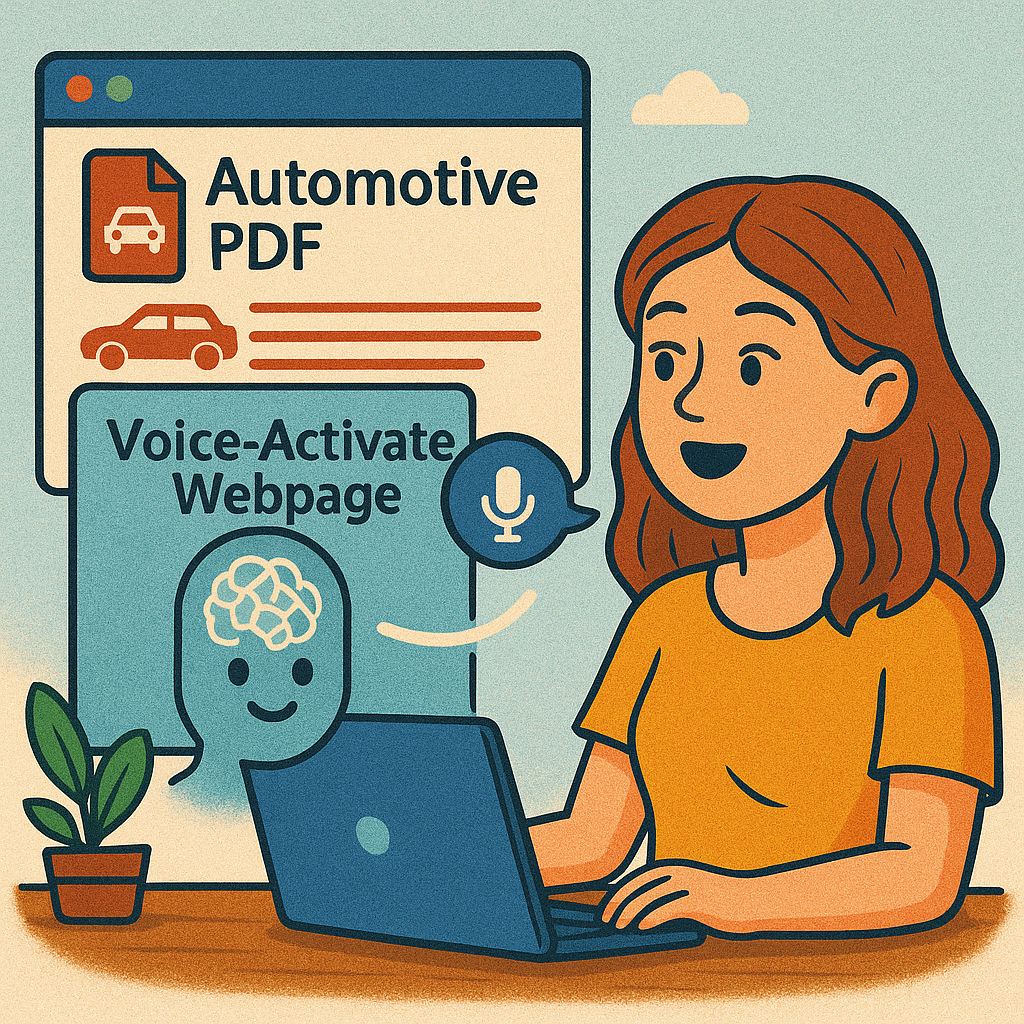In this step by step demo, we’ll show you how to build and create a voice activated web page that allows real-time audio queries with a friendly GPT-powered chatbot digital agent.

This solution uses Azure OpenAI, AI Foundry, Azure AI Search and a text embedding model to retrieve knowledge from private PDF document stored in Azure. We have a front end and backend solution which is deployed from Microsoft git hub code. The frontend receives the audio input, sends that to the Python backend which interfaces with Azure OpenAI real-time API, and includes a tool for searching Azure AI Search using a Azure AI Chatbot.
Whether it’s for 24/7 customer support or internal knowledge access, this system demonstrates how Azure AI tools come together for a seamless conversational experience.
In this example, we have a PDF document of automotive car parts which is uploaded and indexed by Azure AI search to query the data set from a voice activated response. It can be used for a wide range of use cases for customer support to solve the lack of fast, 24/7 round the clock support for customers. It could be used for general FAQ questions that are repeatedly asked to free up staff to be used in complex cases. Has many other benefits such as always available, no need for human agents to cover every time zone.
Its scalable and can handles thousands of queries simultaneously without downtime. Also consistent delivering uniform responses based on the same knowledge set. Can also handle different languages with ease.
Contents of this Video using Azure AI Chatbot
- Intro
- Create Azure OpenAI
- Launch Azure AI Foundry and Deploy GPT Model
- Create Azure AI Search to Index Private Data
- Create Azure Blob Storage
- Create Storage Container
- Upload Data
- Enable System Assigned Identity
- Enable RBAC roles on Storage Account
- Deploy Text Embedding Model
- Import and Vectorize Data
- Deploy Azure Open AI Code
- Testing Real Time Speech




